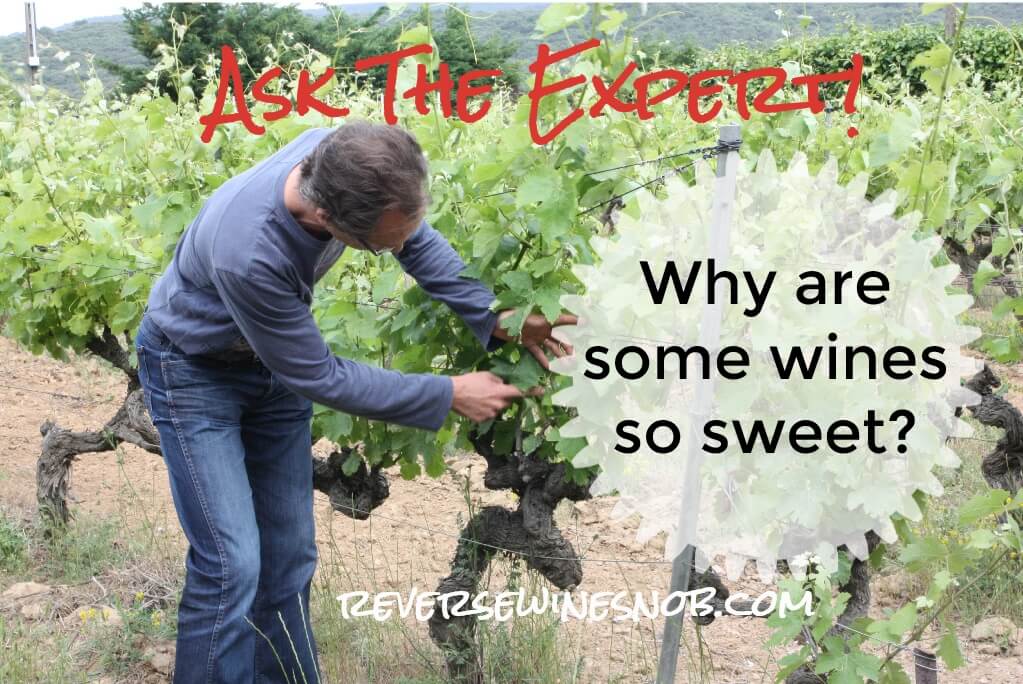Exploring how sweet wines are made.
We’re back to tackle another question in our Ask The Expert series!
In this edition, we explore how a winemaker produces a sweet wine – or conversely, a dry one. Whatever you prefer, whether bone dry or those that are sickly sweet, Winemaker Hal Landvoigt of Lunar Harvest breaks down how it happens!
Here is Hal’s fascinating answer to the question: Why Are Some Wines So Sweet?

Grapes with more sugar (higher brix, is the technical phrase) have the potential to make sweeter wines or to make higher alcohol wines. When we take the juice from the grapes and add yeast to convert the juice into alcohol, the yeast consumes the sugar and produces alcohol as the byproduct. This is true for all yeast used to make alcoholic beverages, whether it is beer, wine, cider, or even whiskey and vodka – yeast consumes the sugar and produces alcohol.
When the juice is fermenting, we then make a second decision about when to stop the fermentation. In a Riesling, for instance, if we allow the yeast to consume all the sugar in the juice, it produces a dry wine – meaning it has very little sugar in it. It would be a dry Riesling. If we stop the fermentation before all the sugar has been consumed, we end up with a wine that has residual sugar (sweetness). In the world of Riesling, you can end up with great variability typically ranging in four categories: dry, medium dry, medium sweet and sweet – which encompasses late harvest and ice wines. Lunar Harvest Riesling for example, has 1.9% residual sugar which puts it at a medium sweet level.
How do we do this? We stop the fermentation, either by adding Sulfur Dioxide (SO2) which inhibits the yeast’s activity, or we run the wine through a centrifuge and “spin” the yeast out of the wine. In some situations, we may add sweetness back to the wine either with very sweet grape juice. This is done to balance out the acid in the wine, add richness (viscosity) or to bring out a more fruity expression in the wine.
Thanks to Winemaker Hal Landvoigt of Lunar Harvest for his answer to the question Why Are Some Wines So Sweet?
Have a burning question of your own? Shoot us a tweet or a message on our Facebook page and we’ll line up an expert to get you an answer! In the meantime you can peruse all of our Expert Answers here!
Want more great content like this? Sign up for our FREE GUIDE: How To Drink Great Wine Without Breaking The Bank!
Would You Like To Save This?
We won't send you spam, unsubscribe at any time.





